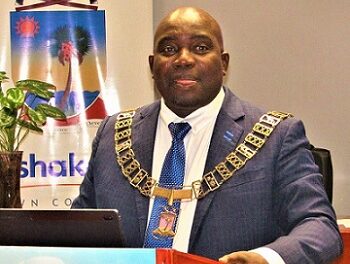Why we compromise on communication but not on compliance
By Hileni Amadhila /
In most organisations, there are departments that are considered non-negotiable. Legal and Finance, for instance, operate with clearly defined standards and a level of seriousness that no one dares question.
Contracts go through rigorous legal reviews. Financial reports are audited, undergo compliance checks, and are thoroughly scrutinised. The processes are respected because the risk of getting them wrong is simply too high.
Yet, when it comes to communication and brand consistency, areas that directly shape how the public perceives us, the same discipline is often absent. Brand and communication guidelines are too frequently treated as optional.
They may exist in principle, carefully laid out in beautifully designed documents, but in practice, they’re often ignored, bent, or selectively applied depending on convenience.
A social media post goes out with the wrong tone. A marketing flyer uses outdated colours. A department sends a mass email in a voice completely at odds with the brand’s identity.
These may seem like minor issues, but over time, they create confusion, weaken trust, and dilute the very brand we’ve worked so hard to build.
There’s a false assumption that brand is about aesthetics, that it’s cosmetic. In reality, communication is strategic. It shapes how people understand us, trust us, and engage with us. It affects everything from employee alignment to customer loyalty.
If Legal protects the organisation from external risk and Finance from internal mismanagement, then Brand protects us from irrelevance. And irrelevance is a risk that grows quietly, until it becomes urgent. We would never tolerate inconsistent financial reporting.
We wouldn’t allow different departments to interpret compliance requirements in their own way. So why do we allow teams across the business to interpret the brand voice however they choose? A fractured voice leads to a fractured experience.
And in a world where customers are constantly interacting with us across different platforms and touchpoints, consistency in how we communicate isn’t a luxury. It’s essential.
To fix this, communication needs to be given the same level of seriousness as the so-called “hard” functions.
That doesn’t mean slowing everything down with red tape.
It means embedding a culture where clear, consistent, onbrand communication is expected and respected. It means leaders stop signing off on communications that are off-brand, vague, or disconnected from the organisation’s tone.
It means brand guidelines aren’t filed away in shared folders, but actively used, taught, and reinforced.
Ultimately, leadership must drive this change. Just as executives wouldn’t approve a financial report that hadn’t been reviewed, they shouldn’t approve public communication that hasn’t been aligned with the brand. Respect for brand and communication needs to be modelled from the top down.
And communication professionals need to be empowered, not just tasked with maintaining consistency. They need real influence, real access, and a seat at the decision-making table. Reputation is one of the most valuable and fragile assets any organisation holds.
Inconsistent communication doesn’t just confuse people, it weakens credibility. And in today’s environment, where attention is short and impressions are made instantly, how we show up, visually, verbally, emotionally, defines who we are.
We may never compromise on Legal or Finance. It’s time we applied the same discipline and respect to Communication. Because how we speak, write, and represent ourselves to the world isn’t just branding, it’s business
– Hileni Amadhila is the Senior Public Relations, Stakeholder and Communications Consultant at Old Mutual Namibia.







